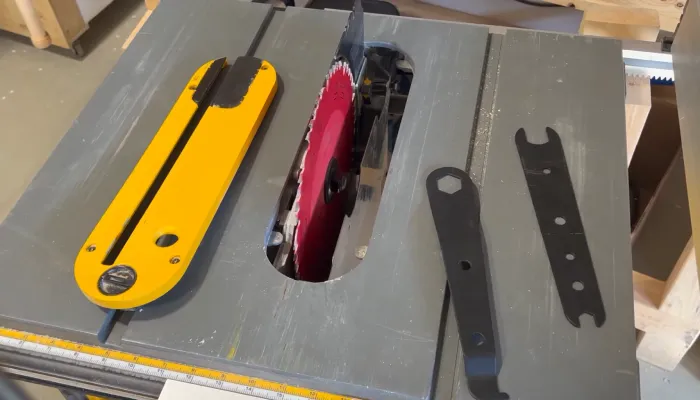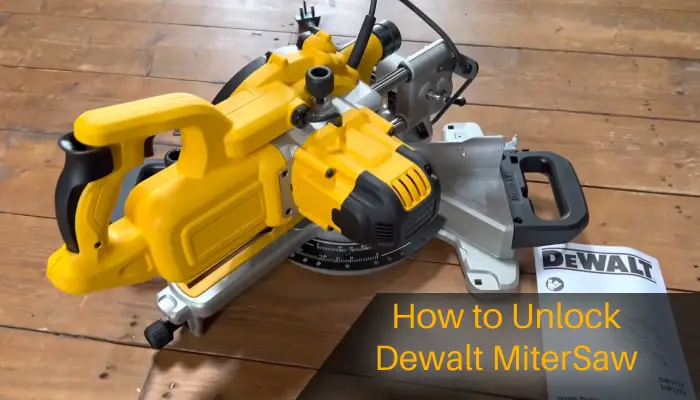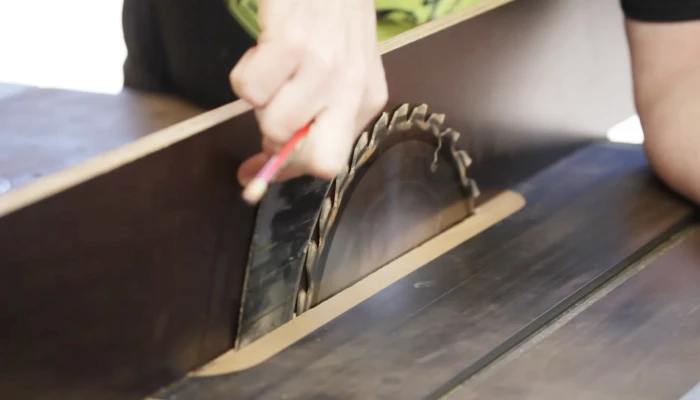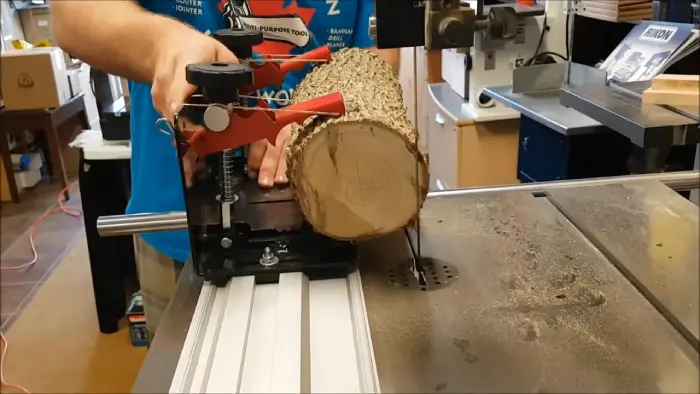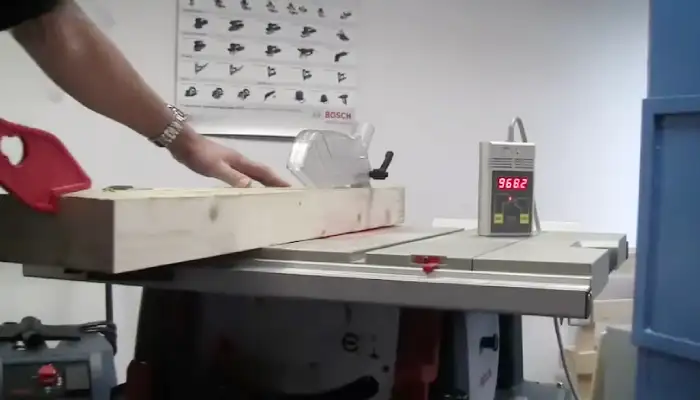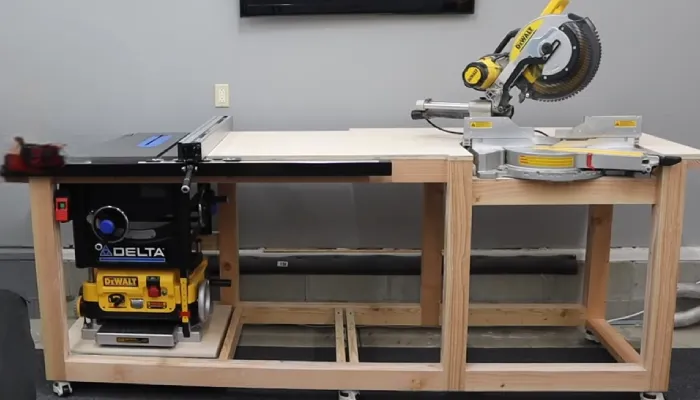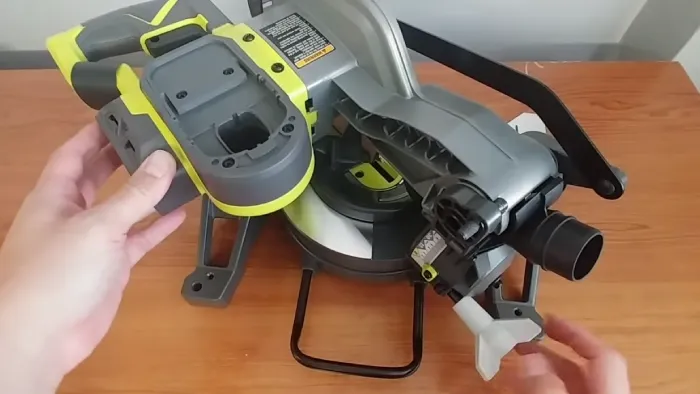Can I Use an 8 Inch Dado Blade on a 10 Inch Table Saw: 6 Factors
The compatibility between dado blades and table saws is crucial for woodworkers seeking versatility and precision in their projects. A common question is whether a 10-inch table saw can accommodate a Dado blade measuring 8 inches.
According to my research, you can use an 8-inch dado blade on a 10-inch table saw, with some limitations. Arbor compatibility, depth of cut, motor load, and safety measures must be considered carefully.
Well, let me tell you how to use an 8-inch dado blade with a 10-inch table saw. I’ll explain each factor to consider in detail so you’ll be able to make the most informed decision for your project.
How Can You Use an 8 Inch Dado Blade on a 10 Inch Table Saw: Factors to Consider
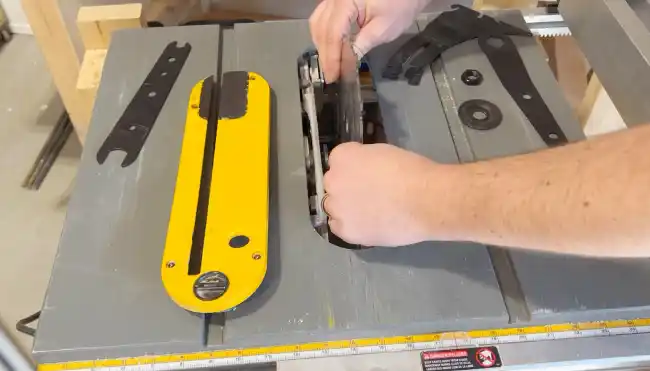
I found several important factors that you need to consider when using an 8-inch Dado blade on a 10-inch table saw for a wood-based project.
- Arbor compatibility
- Depth of cut considerations
- Arbor length and fastening
- Consideration for motor load
- Throat plate compatibility
- Blade guard and riving knife adjustment
No 01: Arbor Compatibility
Before using an 8-inch dado blade on a 10-inch table saw for a woodworking project, it’s important to consider the factor of arbor compatibility.
The dado blade’s arbor hole size must match the table saw’s arbor diameter to ensure a secure and stable fit. The arbor is the shaft on which the blade is mounted, and it’s crucial that the blade fits snugly onto the arbor to prevent any wobbling or movement during operation.
A dado blade that does not match the arbor diameter of the table saw can cause a dangerous situation and compromise the accuracy and safety of the cuts.
No 02: Depth of Cut Considerations
An 8-inch dado blade typically has a maximum cutting depth of 1 1/2 inches, which is suitable for most dadoes and rabbets. However, it’s important to measure the depth of the groove or dado you need to cut in your project and ensure that it falls within the capabilities of the blade.
If the required depth exceeds 1 1/2 inches, you may need to consider using a different blade or making multiple passes to achieve the desired depth.
I always recommend checking the 8 or 8 1/4-inch and 10-inch table saw manufacturer’s guidelines for maximum cut depth and consulting the saw’s manual.
No 03: Arbor Length and Fastening
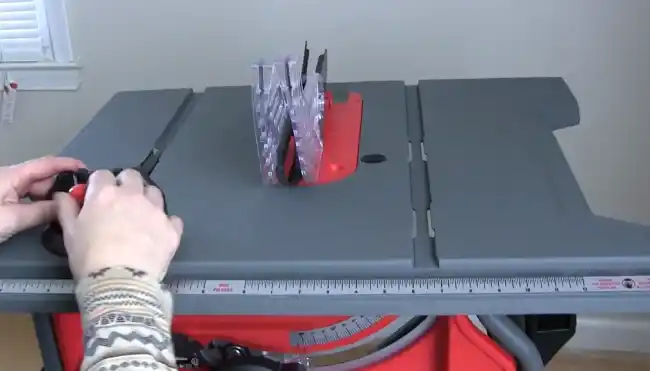
The arbor length is a crucial factor in this process. The arbor should be long enough to accommodate the dado blade, washer, and nut fully threaded onto it. This ensures that the blade is securely fastened and prevents any potential loosening during operation.
I strongly advise you to check your table saw’s specifications to ensure that the arbor length is compatible with the dado blade you intend to use. If the arbor isn’t long enough, you may need to consider purchasing an arbor extension or a different table saw with a longer arbor.
I believe properly fastening the dado blade is essential for safety and optimal performance in woodworking projects.
No 04: Consideration for Motor Load
When using a smaller diameter dado blade, the motor load is reduced due to the decreased weight of the blade set. This means that the motor doesn’t have to work as hard to cut wide and deep dados, resulting in smoother operation and less strain on the motor.
But smaller blades require more teeth to cut efficiently, especially when cutting a 4×4 using a table saw. Otherwise, the saw motor will work harder, and the cut may be slower with more tear out than expected from a full-sized blade.
I advise considering the motor load of an 8-inch Dado blade on a 10-inch table saw to ensure optimal performance and longevity.
No 05: Throat Plate Compatibility
The throat plate, or insert, supports the workpiece and helps prevent tear-out and kickback. A compatible throat plate should accommodate the smaller diameter of the dado blade. This means that the opening in the throat plate should precisely match the diameter of the dado blade.
As far as I know, if the throat plate is too large, it can lead to instability and unsafe cutting conditions. On the other hand, if the throat plate is too small, it may not provide adequate support for the workpiece, leading to potential accuracy and safety issues.
Therefore, either use a custom throat plate designed for 8-inch dado blades or an adjustable throat plate that can be adjusted to the appropriate size.
No 06: Blade Guard and Riving Knife Adjustment
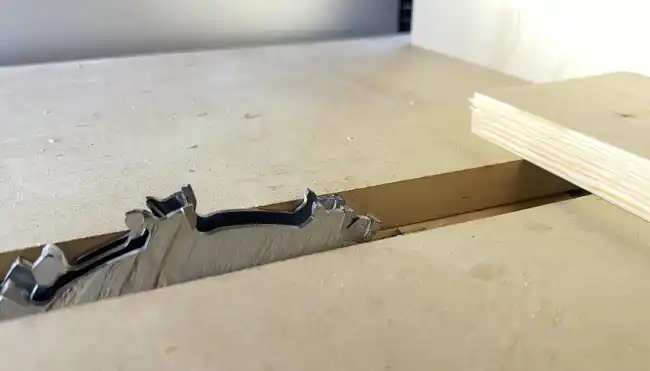
The blade guard should be adjusted to the appropriate height according to the manufacturer’s guidelines for your specific table saw model. The old table saw circular blade guard must adequately cover the dado blade during operation to prevent accidental contact.
I believe this adjustment not only enhances safety but also helps to minimize the risk of flying debris.
The riving knife should also be aligned with the dado blade’s smaller diameter. This ensures the knife sits close to the blade, preventing binding and kickback.
Can I put a 7 inch blade on a 10 inch table saw?
It’s possible to use a 7-inch blade with a 10-inch table saw. However, I think you should consider 3 factors before doing so.
Firstly, using a smaller blade will result in a reduced depth of cut. This means that the maximum thickness of material that can be cut will be limited compared to using a 10-inch blade.
Additionally, the rim speed of the blade will be lower when using a smaller blade on a 10-inch table saw. This can slightly increase the chances of tearout the blade, where the wood fibers are pulled out during cutting.
On the other hand, using a smaller blade can also reduce the risk of burning, as the lower rim speed generates less heat during the cut.
Does a 10-inch table saw work with a 12-inch blade?
In my opinion, you can use a 12-inch blade on your 10-inch table saw, but you should keep 2 considerations in mind.
One of the main concerns is the reduced depth of cut. A 10-inch table saw is designed to accommodate a maximum blade diameter of 10 inches, so a larger 12-inch blade will limit the depth at which the blade can be cut. This can be problematic when working with thicker materials or making deep cuts.
Additionally, using a larger blade may put extra strain on the table saw’s motor, potentially leading to overheating or even causing damage to the saw. It’s important to check the manufacturer’s guidelines and specifications for the table saw to ensure compatibility with a 12-inch blade.
Using a 10-Inch Table Saw With an 8-Inch Dado Blade
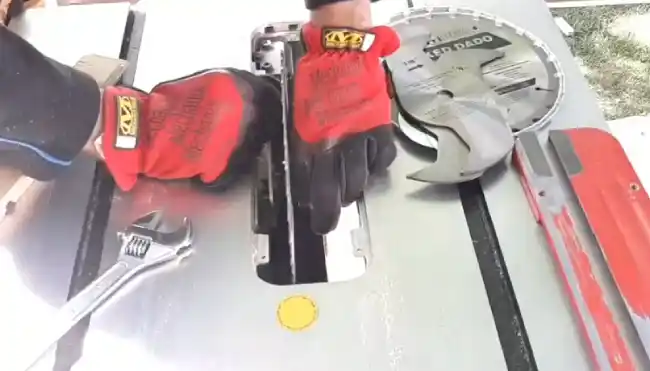
It’s possible to use an 8 inch dado blade on a 10 inch table saw for wood-based projects. However, as I mentioned above, it’s important to consider factors such as blade compatibility, safety precautions, and adjustment settings.
While the practice is commonly endorsed, safety remains paramount, urging woodworkers to adhere to manufacturer guidelines and be aware of potential risks.
It’s my hope that you’ll be able to use an 8″ dado blade on a 10-inch table saw if you follow these guidelines and take the necessary precautions.

